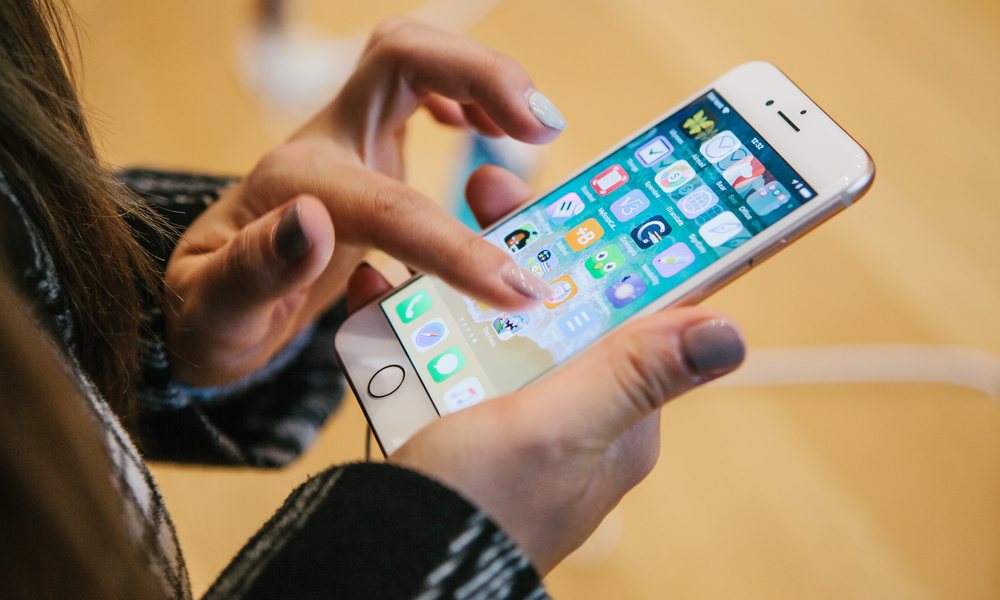The Classic iPhone 8 Design Could Be Making a Comeback
 Credit: franz12 / Shutterstock
Credit: franz12 / Shutterstock
Toggle Dark Mode
Although 2018 seemed to have heralded Apple’s final move into Face ID and gesture-based bezel-less displays for the iPhone, it turns out now that the days of home buttons and Touch ID may not be completely behind us, if recent supply chain reports are to be believed.
According to the Economic Daily News (Google Translate), Apple is planning to launch an “updated” 4.7-inch iPhone early next year that would essentially be a successor to the iPhone 8. Sources suggest that the unit would retain the same design and screen, but would include Apple’s as-yet-unreleased A13 processor — the same one that will likely land in this year’s iPhone XS/XR successors — along with a single-lens rear camera. It will be reportedly be sold in a single 128 GB version for $649.
It’s unclear what the new model will be called, but it sounds like it could be Apple’s evolution of the iPhone SE. An “iPhone SE 2” was hotly rumoured last year, with some reports even going so far as to say that it was already in production. By last fall, however, we had basically given up on seeing the new smaller and lower-cost model, especially after Apple pushed out the lower-cost iPhone XR at the entry level.
Hopes began to rise again, however, as Apple began to clear out iPhone SE stock earlier this year, possibly making room for an updated version, as well as perhaps even testing customer demand. While there’s been little information about a new four-inch model that would be a direct replacement for the original iPhone SE (which was in turn based on the 2013 iPhone 5s design), earlier this month rumours surfaced claiming that Apple was working on a 4.8-inch OLED “iPhone XE” model.
These reports suggested that the “iPhone XE” would include a lower-end processor — possibly even something as old as the 2016 A10 chip — but feature the X-style design and an OLED display. While it’s certainly possible that Apple could be considering a move in this direction, the cost of OLED technology would suggest that such a model wouldn’t be a likely successor to the iPhone SE, but would more likely sit somewhere in between the iPhone XR and iPhone XS lineup in price.
On the other hand, as much as some may lament the loss of the four-inch form factor of the iPhone 5 and iPhone SE, it’s fair to say that most of the smartphone industry has moved on from smaller phones, and the demand for something like an iPhone SE may now be more about price than size. Further, Apple’s decision to go “all-in” on the iPhone X-series design has left many long-term casual iPhone users feeling a bit disenfranchised by the loss of the home button — a move that some analysts believe has contributed to Apple’s flagging iPhone sales due to a resistance to change. While those users have been happy to stick with their older iPhone models for now — and in fact Apple still sells the iPhone 7 and iPhone 8 — it stands to reason that the company is going to need to eventually provide a comfortable and familiar upgrade path if it wants to be able to sell newer iPhones to that category of users and keep them within the iOS family.
As for naming, Apple could choose to call it the “iPhone SE 2” to basically telegraph that it’s the long-awaited successor to that model, or Apple could also just as logically use the previously-skipped “iPhone 9” name or even something more whimsical like “iPhone Classic.” Either way, such a device would be a key addition in markets like India and China where Apple has had problems selling its higher-end iPhone X-series models as prices have risen beyond what most can afford.
[The information provided in this article has NOT been confirmed by Apple and may be speculation. Provided details may not be factual. Take all rumors, tech or otherwise, with a grain of salt.]






